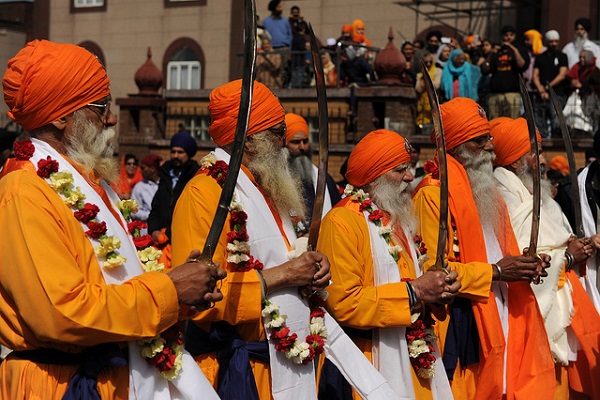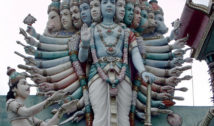
Happy Vaisakhi! The History and Celebration of the Khalsa Panth
- By Gary Nguyen --
- 13 Apr 2017 --

Sikhs celebrate the formation of the Khalsa
The Vaisakhi is a monumental celebration among those who practice the Sikh faith. Vaisakhi is an annual commemoration of a special sect within the Sikh community called the Khalsa.[/tweetit] Founded in 1699, the Khalsa Panth (sect) consists of the purest of the Sikh community. Vaisakhi usually falls on the 13th or the 14th of April and is marked by colorful celebrations.
Happy Vaisakhi! The History and Celebration of the Khalsa[/tweetthis]
Some people may confuse Vaisakhi with the Sikh community’s New Year or harvest period. To clarify, Vaisakhi is not a New Year celebration, and in the past, it coincided with the communal harvest. However, Vaisakhi is remembered for the birth of the Khalsa.
The Sikh celebrate Vaisakhi for much the same reasons as Christians celebrate Easter: to remember the past. Here is a little background on the celebration’s history.
Back in 1699, the Sikh community faced possible annihilation if the challenged the Islamization of India. To combat this fate, the tenth Guru (a person who had achieved spiritual enlightenment) of the Sikh community called his devotees to a divine retreat camp called Anandpur Sahib. This Guru’s name was Guru Gobind Rai.
Guru Gobind Rai realized the only way for the values of the Sikh to survive was to find the strongest in faith among his followers to help him preserve it. Guru Gobind Rai decided to test the devotion of his disciples by asking which of them was ready to die for the Sikh faith.
It is said a moment of unease came over the gathering then. The people thought their leader had gone mad. However, one man came forward. He and the Guru entered the latter's tent, and the Guru emerged alone and with a bloody sword. Again, he asked for a volunteer to make the ‘great sacrifice’ and one obliged. Guru Rai repeated the process with three more men. To the surprise of the crowd, when Guru Rai came out of his tent the fifth time, he did so with all the five men dressed in pious white garb.
Guru Rai called the five the Panj Pyare, the Five Beloved. They had shown true dedication to the faith and embodied him. Guru Rai gave to these four symbols of their new station of the holiest: a comb (Kangha), bracelet (Karra), sword (Kirpan) and underwear (Kachera). The fifth was they would keep their hair long (Kesh), and together the symbols were called the Five Ks. The Panj Pyare then underwent a baptism ritual (Amrit shakna) of holy water and sugar conducted by Guru Rai and his wife Mata Sundri. After that, the five became the first of the new Sikh community, the Khalsa.
The Khalsa males including Guru Rai renounced their lineages and took up the name Singh (lion, the symbol of courage) while the women became the Kaur (princess, symbolizing dignity). The Khalsa served others, participated in wars against repression and advocated for justice. It is what they are remembered for.
The Khalsa also marked the end of the caste system as the Panj Pyare were from modest backgrounds but raised to a higher calling.
In their honor, the Sikh sing hymns (Gurbani) and conduct processions called Nagar Kirtan on Vaisakhi. The Sikh also promote the Khalsa’s virtue of service by offering food to others on that day.
A very happy Vaisakhi to all.
Today marks the birth of the Khalsa and the Sikh faith as we know it today.#vaisakhi pic.twitter.com/CFuXSm55oo
— Manraj Othi (@ManrajOthi) April 13, 2017



















